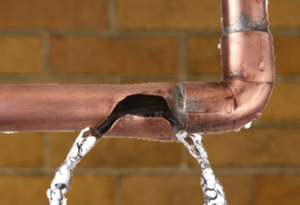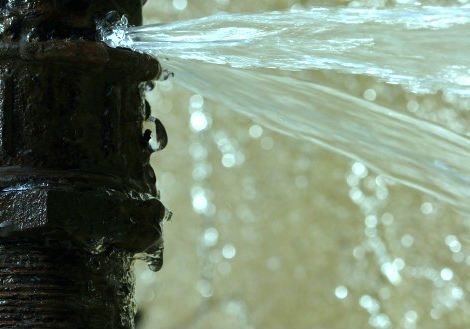Knowing Effective Septic Tank Maintenance: What You Need to Know
Knowing Effective Septic Tank Maintenance: What You Need to Know
Blog Article
They are making several good points regarding Water Damage Restoration Do’s And Don’t overall in this content directly below.

What should you do if a pipes bursts in your home? Do you want a mini-waterfall as well as flooding in an area of your house? If you find yourself in this situation, you should act fast. The longer you wait, the extra extreme the damage that can happen to your residential or commercial property. The presence of mind is key in these events. For these factors, you require to discover how to act in the event of a ruptured water pipe. Due to the fact that time is of the significance, check out the following tips listed below to assist you act quick.
Shut down the Key Waterline Valve
The first thing to do? Shut the shut-off valve. Look for the neighborhood shut-off valve to turn off the water in one details location only. If you do not understand where the localized shut-off shutoff is, opt for the major water line valve and transform it off. This action will remove the water right away in your whole residence. Typically, the major valve is found outside the home beside the water meter. If it's not there, you can also locate it in two areas: in the basement at eye degree or the 1st flooring on the ground. Normally, contractors placed the shut-off valve generally ground level washroom or best next to it.
Call Water Damages Remediation Pros for Aid
After closing the water resource, call the professionals for help. With their expert help, you can avoid much larger water damages consisting of deformed walls, loosened floor tiles, or harmed structures.
Document the Damage For Insurance
While you're waiting for the pros to arrive, get some documentation of the damages triggered by the errant pipe. Do close-up shots of the harmed places as well as valuables.
Restore Things That Can Be Saved
As soon as you're done taking images, take a look at the damaged items and obtain one of the most essential ones from the stack. Dry them off in a dry/warm place far from the broken area and attempt to protect them as much as you can. Drag as much wetness as you can to the material so it can start to dry.
Start the Drying Refine
You require to start the drying procedure immediately. Thankfully, the water from your waterlines is currently clean so you don't need to fret about sewer water. The moving water may have interrupted the dirt and debris in your carpetings as well as floorboards. In this instance, put some handwear covers on as well as start some troubleshooting. Use pails to dispose out the water. Remove as much water as you can from the surfaces with old towels. Activate an electric follower or open your windows to advertise air flow. These steps will certainly hasten to completely dry and prevent mold as well as mildew development.
Professionals are the only individuals qualified to examine correctly and also repair the burs pipelines and succeeding damage. As constantly, pipes do not simply all of a sudden break out of the blue. They generally give quiet red flags like gurgling paint, water discolorations. Strange sounds in the plumbing, caving ceiling, stuffy odor, or peeling off wallpaper. Make note of these signs and also do some preventive measures so you can nip any type of concerns in the bud.
What should you do if a water pipe ruptureds in your residence? For these reasons, you need to find out just how to act in the event of a ruptured water pipe. After closing the water resource, call the professionals for assistance. With their specialist help, you can avoid much larger water damages consisting of deformed baseboards, loose ceramic tiles, or harmed frameworks. Fortunately, the water from your waterlines is already tidy so you do not have to worry about drain water.
BROKEN WATER PIPES: COST TO REPLACE & WAYS TO FIX A PIPE
CAUSES OF A BROKEN WATER PIPE
A water pipe can break for several reasons depending on the environment you live in, type of pipe, and circumstances.
The most common cause of broken pipes is freezing. If you live in a colder climate, this could happen. When water freezes it increases in volume by 9% and the pressure in the pipes can go from 40 psi to 40,000 psi. Clearly, this could be detrimental to the pipes. Water freezing causes quick expansion, which puts stress on the pipes and could lead them to crack or weaken. When water thaws, it will leak out the cracks. Other changes in water pressure can also cause breakage. Another common cause of broken water pipes is age.
Depending on the material, water pipes can last anywhere from 70-100 years. But the older they get, the more susceptible they are to weakening and corroding. Older pipes coming into contact with another material could speed up the corrosion process as well. PVC pipes can become brittle with age, while copper is prone to corrosion and stress over time. Something that could also potentially break water pipes is when they move. They may move from construction or the house settling. Moving can stress the fixed pipe which may lead to a leak or burst pipe.
HOW MUCH WATER COULD LEAK INTO YOUR HOUSE FROM A BROKEN PIPE?
The amount of water that leaks depend on how big the break in a pipe is. If it is just a minor crack, water will slowly leak out. This isn’t as serious as a full broken pipe, but it can still cause significant damage to your home. Burst pipes can leak up to 10 gallons of water per minute. The amount of water leaked also depends on what appliance is involved. The water line to your refrigerator can leak ½ to 1 gallon per minute depending on water pressure. One toilet supply line may leak 2-3 gallons a minute and a washing machine hose will leak up to 10-12 gallons per minute.
TURN THE WATER OFF
Doing this first is imperative; everything else can wait. You need to deactivate the water supply to stop the flow of water and prevent more water from leaking into your home. Shutting off the water could potentially save you thousands in water damage repairs. Locating the water shutoff valve depends on the climate you live in. For colder climates, the valves are usually inside, such as in the basement. For houses in milder weather, the shutoff valves will probably be outside—either attached to an exterior wall or in an underground box with a removable lid.
OPEN A FAUCET
The next thing to do is to open a faucet or turn on a sink. This will relieve any remaining water pressure in the pipes and ensure a full-shut down.
GET RID OF THE WATER
The quicker you get rid of the water, the less water damage and mold there could be. Use a mop and a shop vacuum to help get clean up the water. Use towels to dry everything the best you can.
CUT AND REMOVE THE DAMAGED PIPE
Once you have shut off the water and drained the damaged water pipe, you can begin to fix the issue. Cut out the damaged section of the pipe with a pipe cutter, ensuring that you also cut one inch extra on each side of the damage. Once you get rid of the broken part of the pipe, you may begin repairs.
https://www.wmhendersoninc.com/blog/broken-water-pipes-cost-to-replace-ways-to-fix-a-pipe/

I found that blog entry about Water Damage Restoration Do’s And Don’t when surfing the search engines. Sharing is nice. You won't know, you may very well be doing someone a favor. I thank you for reading our article about What To Do And What Not To Do When Dealing With Water Damage.
Report this page